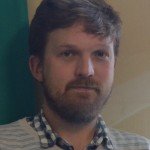Charlotte Mitchell (public health researcher) and Dr Joe Bourdillon-Schicker (BBT ST1 doctor) recently completed a six month Improving Global Health Fellowship[1] in South Africa.
In February last year we exchanged the grey, British winter for African surf and sunshine, and our jobs in the NHS for work in a far less-developed and less well-resourced health system. We have spent the last six months on a quality improvement Fellowship in South Africa’s Eastern Cape, based in the Internal Medicine department of a 737-bed district hospital.
On arrival we found both a department with some very capable and inspiring clinicians, but also an overstretched and under-resourced environment in which staff quickly became demoralised by the setting and its associated challenges.
Our fascinating challenge was therefore to consider how to help change the departmental culture to incorporate a quality improvement approach. The Lead Consultant was keen to introduce mandatory ‘system strengthening’ projects for interns (junior doctors) to conduct during their rotations. We felt that the quality improvement approaches used back home could contribute to this, so we embarked on facilitating a series of workshops and presentations.
As well as engaging with the department as a whole, (through brief, weekly QI presentations) we held weekly workshops for interns. At these workshops we introduced the Model for Improvement and as their individual projects progressed, we worked through PDSA cycles, fishbone diagrams, process maps, and suchlike.
We were delighted by the response from the doctors. Workshop attendance was high and they engaged well with the sessions and tools. Each intern progressed with a project and a number have already achieved demonstrable outcomes, with some completing PDSA cycles during the three months that we worked with them, while others were tackling more long-term projects.
However, this was not without some challenges. In particular we had to strike a balance between allowing interns time to choose and develop their projects, and encouraging them to get going quickly (to enable them to complete a PDSA cycle within their four months in the department). Senior doctors are key for the projects’ sustainability as they ensure continuity between batches of interns. However, we struggled to find hooks and ways to involve senior doctors, but this is something the new Fellows are working on.
Overall, interns’ feedback indicated that they enjoyed the support and sessions with us, and felt that they had developed knowledge and understanding. Particularly interestingly, their involvement in QI projects seemed to improve how they felt ab
out the department; their increased understanding of systems issues seemed to reduce their frustrations with them and gave hope for improvement.
It seems that our support has helped the department to move towards developing a system strengthening culture. It will take time but with encouragement from local staff and future IGH Fellows, we are sure that a quality improvement approach will be highly beneficial to the clinicians and patients. Furthermore, staff there are keen to spread their approach and learning to other departments and hospitals in the district.
Through being involved in this process and other QI work in the region we have gained an understanding of some more general strengths and challenges of quality improvement in this setting. In particular:
- The need for time and support – We all know in theory that people need time and encouragement to change. This is certainly the case in practice: the three months that we had to work with this particular group felt extremely tight. Added to this, we had a lot of time to put into this project: a lot more time than the majority of clinicians have
- Motivation and morale – It is great to see hard outcomes from particular quality improvement projects, but actually for us the most rewarding outcomes were more intangible ones such as improving the morale of the interns
- Theory and practice – Models and tools, such as the Model for Improvement, fishbone diagrams, and process maps can provide useful frameworks and prompts. However, we had to be very careful to avoid bombarding people with dry, managerial speak. Substantial flexibility was needed in our use of them it was important not to become too focussed on the tools and measurement
- A team quality improvement journey – Discussions, support from each other and thinking through possible issues and solutions seemed crucially valuable elements for the doctors.
Our Fellowship in South Africa has shown us that a quality improvement approach – in this case using the Model for Improvement – can be helpful for tackling the challenges of a resource-poor setting in Southern Africa. As a final reflection, our work here was about people and our successes were not just about numbers of quality improvement cycles but were around clinicians opening up to changing the scope of their role and taking ownership of issues and their improvement.
[1] http://www.tvwleadershipacademy.nhs.uk/improving-global-health

